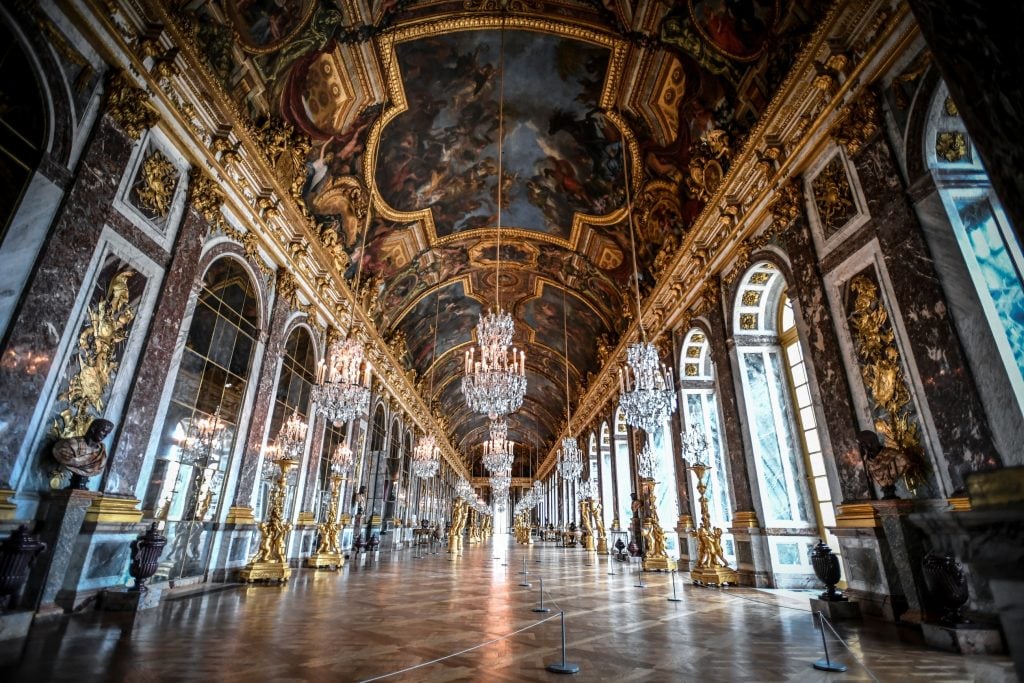Museums & Institutions
The Protesters Who Flung Soup at the Mona Lisa Have Hit Versailles
The “indecency” of the Hall of Mirrors was the backdrop for a protest calling out a new agriculture bill.

The “indecency” of the Hall of Mirrors was the backdrop for a protest calling out a new agriculture bill.

Brian Boucher

Climate activists from the French group Riposte Alimentaire (Food Counterattack) staged a protest at the famed Hall of Mirrors at the French palace of Versailles on Saturday, opening bags of orange powder onto the floor in a protest calling for sustainable food for all. The powder was determined to be harmless clay. Two protesters were arrested, according to media reports.
“The Hall of Mirrors is the indecency of a minority which monopolizes power and money while the people die,” said the group in an Instagram post, adding that “350 years later nothing has changed!”
“Through this action, Riposte Alimentaire wishes to raise awareness about growing inequalities, allowing a privileged minority to monopolize part of the resources, while the majority of citizens collect the crumbs,” said the group. The action was timed to call attention to the Agricultural Orientation Law, a bill coming up for debate on May 14 in the National Assembly, that, in the organization’s view, is “the perfect example” of the problem.
Riposte Alimentaire took credit for the action in a press release, which stated that “the right to food is recognized by international law” and says that the group “wants to have it respected in practice, for universal, democratic and sustainable food.”

The Hall of Mirrors at the Chateau de Versailles in Versailles near Paris. Photo by Stephane de Sakutin/AFP.
Located about 12 miles west of Paris, the Palace of Versailles was commissioned by King Louis XIV, who, beginning in 1661, expanded a simple hunting lodge into what would become the de facto capital of France when the king moved the seat of his court and government there in 1682. The palace and park were designated a World Heritage Site by UNESCO in 1979. About 15 million people visit the palace or its surrounding park and gardens annually, making it one of the world’s greatest tourist attractions.
Riposte Alimentaire is known for high-profile, headline-grabbing climate protests that target cultural institutions and artworks.
In January, the group hurled pumpkin soup at the Mona Lisa at Paris’s Louvre Museum. “What is more important?” protesters shouted after targeting the Leonardo da Vinci work. “Art or the right to healthy and sustainable food? Our agriculture system is sick. Our farmers are dying at work.”
The next month, they threw soup at Claude Monet’s painting Spring (1872) at the Musée des Beaux-Arts in the French city of Lyon. “This spring will be the only one we have left if we don’t react,” the activists chanted, in reference to the painting’s title. “What will our future artists paint? What will we dream of if there is no more spring?”